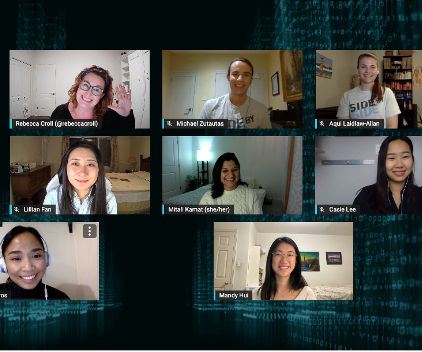How university & business partnerships benefit small- and medium-size enterprises
[♪ Light instrumental background music ♪]
[Imagery of brain with moving wheels and spokes]
Text on screen: [University and business partnerships, Association of Universities and Colleges of Canada logo]
Text on screen: [Benefits to small- and medium-size enterprises]
Stephen Toope, president, The University of British Columbia:
Canada is built on small- and medium-sized enterprise. And it’s often difficult for smaller companies to have in-house capacity for research and development and innovation.
I think that universities are a perfect partner for such industry because we can provide targeted advice, we can provide outstanding graduate students and undergraduates who can help on particular projects.
And of course we can do what you might call contract-based research to look at very particular areas that are important to a company and produce the knowledge that they really don’t have the capacity to do in-house.
While Stephen Toope is speaking:
[A male and female Asian students working together in a classroom.]
[Male student working with wires.]
[Male student wearing a hard hat in factory.]
[Muslim Woman wearing a headscarf teaches equations on a blackboard behind her.]
[Woman and man outside with a huge drill.]
[Two male students each looking through a microscope.]
[Researcher in a laboratory.]
Perrin Beatty, president, Canadian Chamber of Commerce:
One of the great things for small- and medium-sized businesses is that the universities are increasingly tailoring what they offer to what the needs of small- and medium-sized businesses are.
Martha Crago, vice-president Research, Dalhousie University Partnership with Irving Shipbuilding:
So they will come to the university and partner with our researchers here and their students through contracted research to tackle certain products to improve their products, services and processes.
This gives the students the chance to work in that environment to understand their problems and how to provide solutions for them. It gives the industry some R&D capacity that they wouldn’t be able to afford on its own.
While Martha Crago is speaking:
[Four female students in a laboratory.]
[Smiling students sit at their desks in a classroom.]
[Students working with their computers.]
[Male student wears protective eyewear.]
Ray Ivany, president, Acadia University:
We have faculty here that we’ve attracted from around the world; And where there’s a match between a challenge or a particular problem they’re trying to solve and our research capacity it gives them the ability to come up with a home-grown solution, if you will. And of course because you have the geographic proximity, you have the personal relationships that grow from it.
Just that ability in a locality to have the cross pollination between researchers, and the people in the community and any industry sector.To be able to work together closely is just invaluable.
While Ray Ivany is speaking:
[Female student wears protective glasses in a laboratory.]
[Male student uses apparatus in laboratory.]
[Students in a chemistry laboratory.]
[Students and their professor in a laboratory]
[Students in a meeting setting.]
[Two female students in a laboratory work with test samples.]
[Group of students walking outside on a fall day.]
[♪ Light instrumental background music ♪]
[Imagery of brain with moving wheels and spokes]
Text on screen: [Putting ideas to work for Canadians, Association of Universities and Colleges of Canada logo]
Canada’s economy is built on small- and medium-sized enterprises. See how university and business partnerships are driving innovation and enhancing quality of life in Canada.
Tagged: Research and innovation




